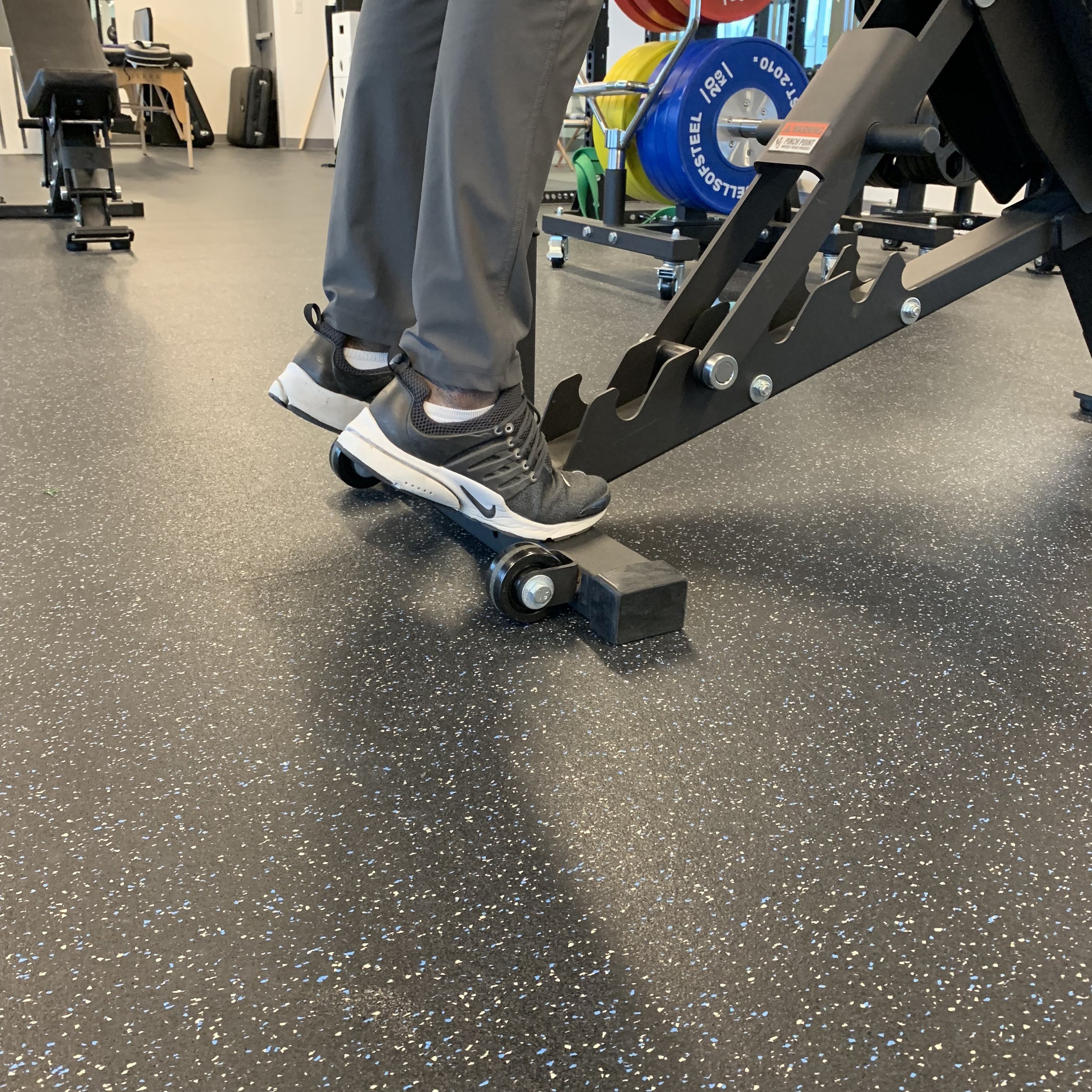The muscles in your lower leg, such as you Soleus and Gastrocnemius (lower and upper calf muscles) significantly impact the health of your ankles and feet. Regular stretching and strengthening exercises can help prevent chronic injuries like Achilles Tendonitis, as well as reduce the severity of acute injuries such as sprained ankles.
Self-Myofacial Release
Starting your exercise routine with foam rolling is a great way to increase mobility and improve the effectiveness of your workout. Regular Self-Myofacial Release (foam rolling, ball rolling etc) will also help prep your body for activity and may help decrease your chances of future injury.
From a seated position with one leg extended, place the foam roller beneath your calf. Use as much or as little pressure as needed and begin to roll back and forth until the tightness dissipates. Gradually progress down the length of your calf and don’t forget to roll along the inside and outside portions of the muscle. Tackle those really tight spots by applying targeted pressure to the area.
Lateral Ankle Mobilization Exercise
The Peroneal muscles run along the outside of the lower leg from the upper shine bone (Tibia) to the ankle and foot. Individuals with poor foot mechanics or athletes who do a lot of jumping, running or frequent change of direction are more susceptible to injuries and general tightness/discomfort along those exterior calf muscles.
Here is a simple lateral ankle mobilization exercise to help relieve tightness and prevent injury:
In a standing position, using a wall or chair for support, gently roll to the outside of your foot. You should begin to feel a stretch to the outer ankle and up the outside of your shin.
Slowly bend and straighten your knee back and forth.
Focus on targeting the different joint angles by making slight adjustments to your movement and body positioning.
This exercise should NOT be done if you have a excessive mobility / hyper mobile ankle joints from a past injury or have recently had an ankle injury. It is also best to do this exercise while wearing shoes as being barefoot will mostly fold the foot and not get up to the ankle effectively.
Calf Raises Progression Exercises
Calf raises are a popular exercise amongst many athletes and for good reason: they help build ankle and posterior chain strength and stability. Both of these are important for any sport that requires sudden acceleration and deceleration (sprinting, jumping, landing). Calf raises can also help to prevent Achilles tendon issues by strengthening the calf muscles and tendon itself and increasing the ability of the tendon to handle load.
This progression series is best performed while standing on a slightly raised platform such as stairs or weight plate so that your heels are hanging off an edge. You can also use a wall or something stable for support.
With straight legs, begin by slowly lifting your heels so that you are on the balls of your feet.
Pause at the top and then lower your heels back to starting position.
The movement should be slow and controlled. Try lowering slowly for 2-3 seconds, pause at the bottom and then raise up again.
Perform 2-3 sets of 10-15 reps.
Progression 1
For a more advanced option, repeat the same motion on leg at time.
Rest your inactive leg on the back heel of your active leg for added weight.
Perform 2-3 sets of 10-15 reps or until fatigue.
Repeat on the other side.
Progression 2
As the last progression, perform single leg bent calf raises to target the soleus.
Slightly bend your active leg’s knee.
Rest your inactive leg on the back heel of your active leg for added weight.
Perform 2-3 sets of 10-15 reps or until fatigue.
Repeat on the other side.
Make sure to stretch after these exercises using some of the techniques below.
Calf Stretch
In order to effectively target both calf muscles, this stretch has two progressions. You will also be able to achieve a deeper and more effective stretch if you use a wall for support.
Progression 1
In the first position, keep the back leg straight to target the Gastrocnemius (upper calf) muscle.
Start in a standing posting facing a wall.
Step one leg back about 3 feet and bend your front knee.
Both your feet should be firmly planted on the ground. If you can’t get your back heel on the ground, shorten your stance.
Lean your weight towards the wall until you feel a stretch in the calf of your back leg. Squeezing your glute muscle can also help increase the stretch.
Hold for 30 - 60 seconds or until you feel the muscle tension in your calf release.
Repeat on the other leg.
Progression 2
For a targeted Soleus stretch, bend the knee of your back leg. You may have to shorten your stance to keep your heel on the ground. Repeat the same exercise as above with the back leg bent.










